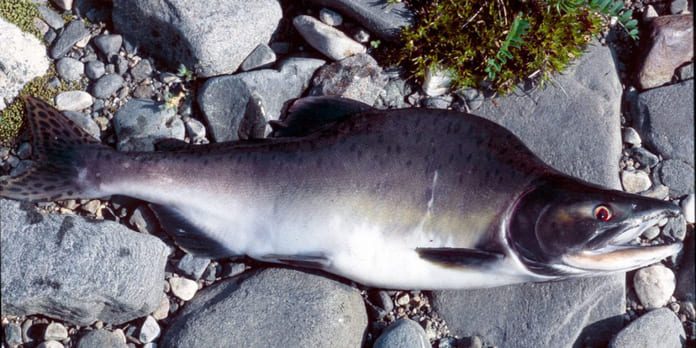Pink salmon filling up rivers.
They were first put out by Soviet scientists on the Kola Peninsula in the 1950s. Native to Pacific Ocean waters, the pink salmon, sometimes called humpback, lives for two years and goes up rivers to spawn. But the species has long since spread to salmon rivers in parts of northern Europe.
“There was talk of an invasion of the humpback axis in 2017 and in 2019. But it was nothing compared to what we see now. This is where the invasion begins. And we have seen so much salmon that we can’t even give it away as dog food,” general manager of hunter and fishing association Vestre Jakobselv Vidar Isaksen told the news site VG.
VG found that 95 per-cent of all the salmon found in a Norwegian salmon river next to the Russian border was the unwanted pink salmon. It is now found in such large quantities that the fish are used as dog food, crab bait and for whoever wants to pick it up.
In the summer, they reach rivers to spawn. Then the fish die after a fixed, two-year life cycle. That’s exactly why they are called “zombie salmon.”
“So all the thousands of salmon that go up into the river now, are falling and rotting. You can only imagine what it looks like when tonnes of rotten pink salmon drop down and pollute the rivers. And we have no idea what consequences such a large population of humpback salmon will have on the ecosystem in the river,” said Isaksen.
Ten non-native Pink salmon reported caught so far in Scottish Rivers and more spotted – keep track of reports on our live map⬇️https://t.co/gwzPrMTyPc pic.twitter.com/7CXNUDq7Ug
— Fisheries Management Scotland (@fms_scotland) July 6, 2021
The species has already been caught this year in the Ness in the Highlands, reported Fisheries Management Scotland. The representative body for Scotland’s District Salmon Fishery Boards told anglers to report catches and sightings of the invasive species.


